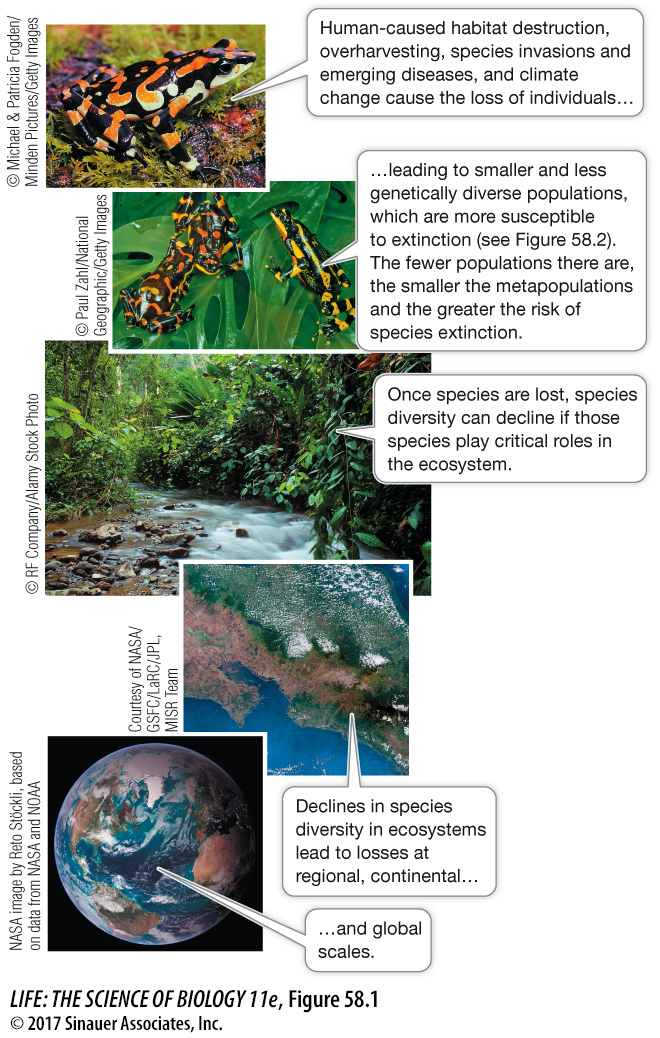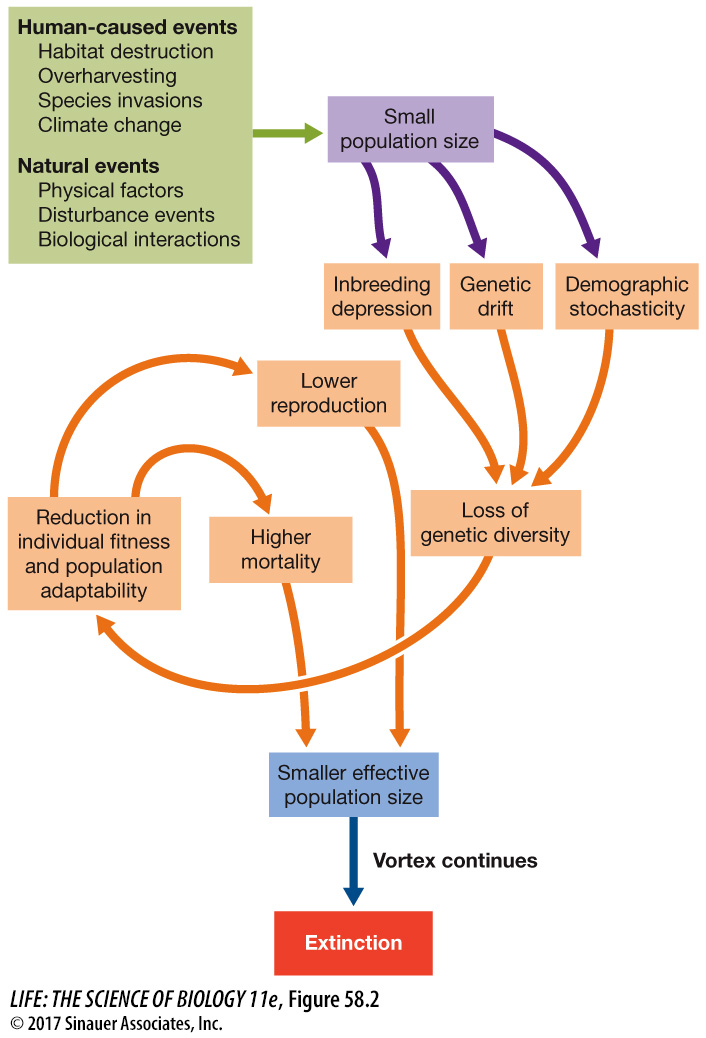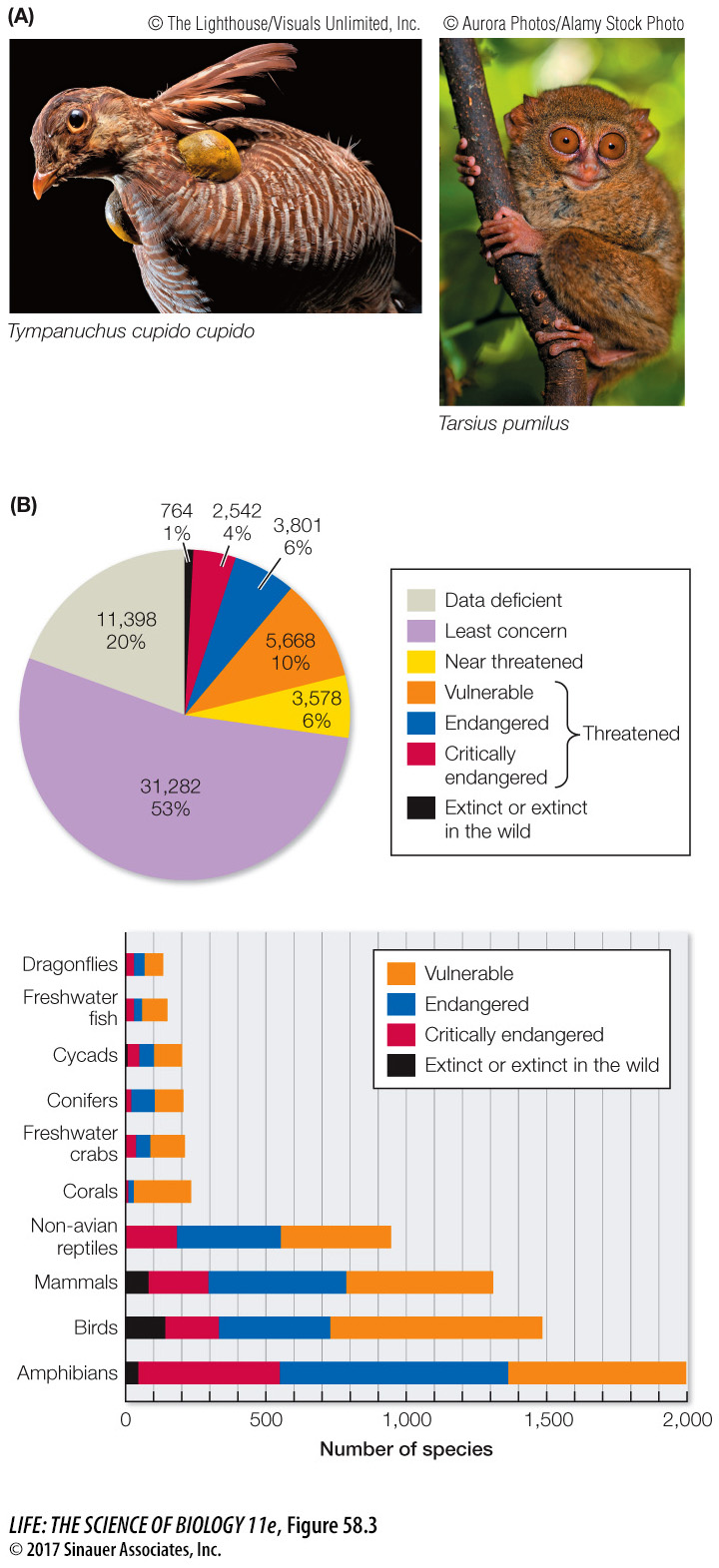Diversity loss at one scale affects diversity loss at other scales
As you have seen in Key Concept 56.1, biodiversity is central to the interconnectedness of various levels of biological organization, from genes to species to communities. Thus the loss of diversity at one scale affects the loss of diversity at other scales (Figure 58.1). For example, when human-
*connect the concepts As described in Key Concept 12.3, inbreeding depression is a state of reduced biological fitness in a population arising from mating among close relatives that tend to have the same recessive, sometimes deleterious, alleles. Key Concept 21.2 describes how in small populations, genetic drift—

focus: key figure

Q: Explain how the chytrid fungal pathogen described in the opening story could cause the extinction of a species such as the harlequin frog.
The chytrid fungal pathogen leads to high mortality of frogs, thus lowering their population size. As population size declines, there is greater chance of inbreeding depression, genetic drift, and demographic stochasticity, which decrease genetic diversity. As genetic diversity declines, individual fitness declines, leading to lower reproduction and higher mortality in the population. This causes the population to continue to maintain a lower effective population size, which can ultimately lead to extinction at the population and species level.
Biodiversity loss is also connected at higher metapopulation, species, and ecosystem levels (see Figure 58.1). For example, you know from Key Concept 54.4 that the larger the metapopulation, the greater the chance that dispersal among source populations can rescue sink populations from extinction. As more local populations become extinct, and as more metapopulations are compromised, there is a greater risk that species will become extinct as well. Unfortunately, if some of those species play critical roles in their ecosystems—
There are many examples of how a series of unfortunate events at different levels of biodiversity has led to the extinction of species (or subspecies, in the case below). Consider the heath hen (Tympanuchus cupido cupido), a large bird in the grouse family (Figure 58.3A). Heath hens were common from Maine to Virginia prior to the 1800s but were hunted extensively for food. By 1830 only one population, on the island of Martha’s Vineyard, Massachusetts, was left. By 1908 only 50 birds remained, and a reserve was established to recover the population, which eventually grew to several thousand birds. Unfortunately, in 1916 a fire and a series of environmental factors that included a hard winter, an influx of predators, and a poultry disease caused the population size to decline dramatically. By 1928 demographic stochasticity and inbreeding depression set in, leaving only 13 individuals—

Q: What percentage of species are extinct versus threatened with extinction? Of those species, which taxonomic group has experienced the most extinction and which is most at risk of extinction?
Of the 59,033 species categorized by the IUCN, 1 percent are extinct and 20 percent are threatened. Birds have suffered the most extinctions (~150 species), but amphibians are most at risk of extinction (~1,900 species).